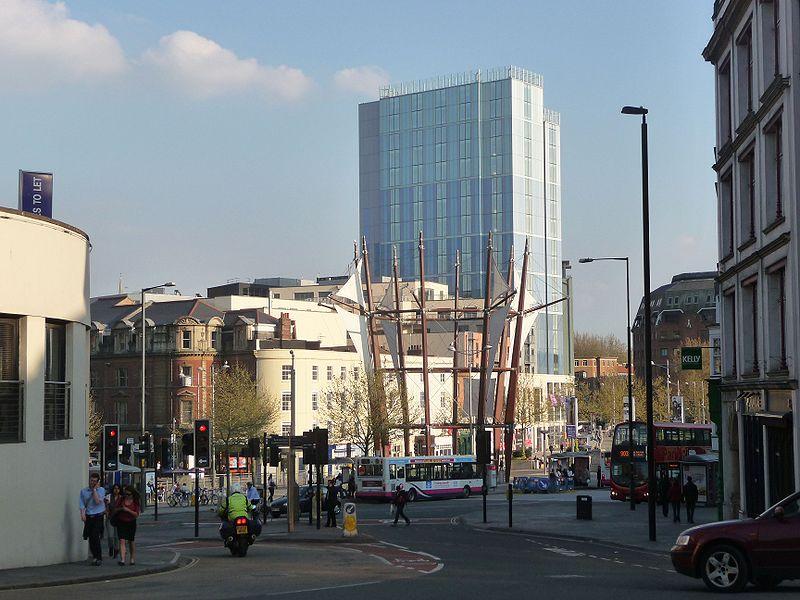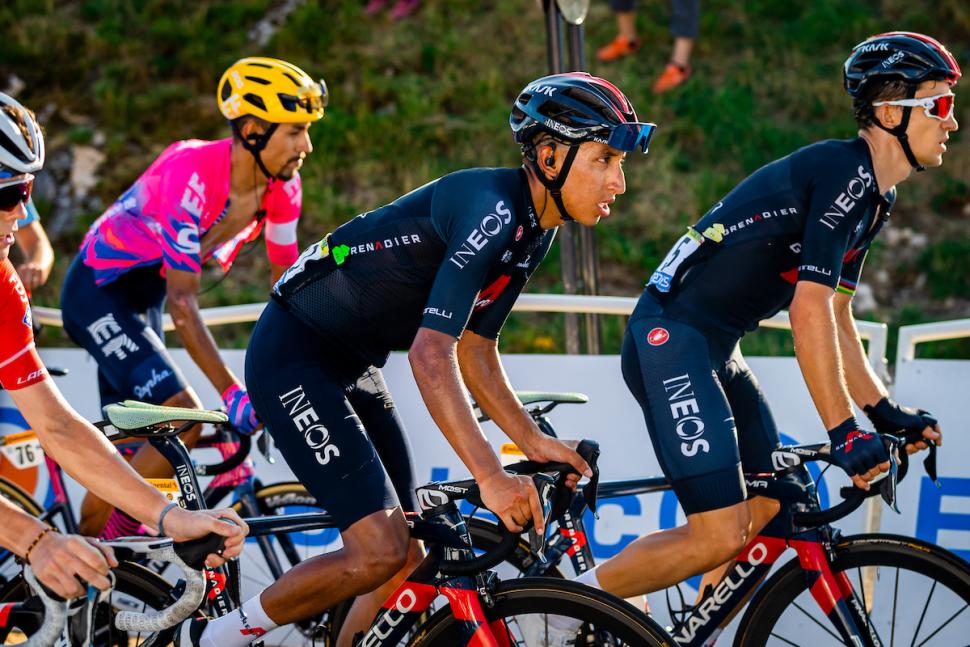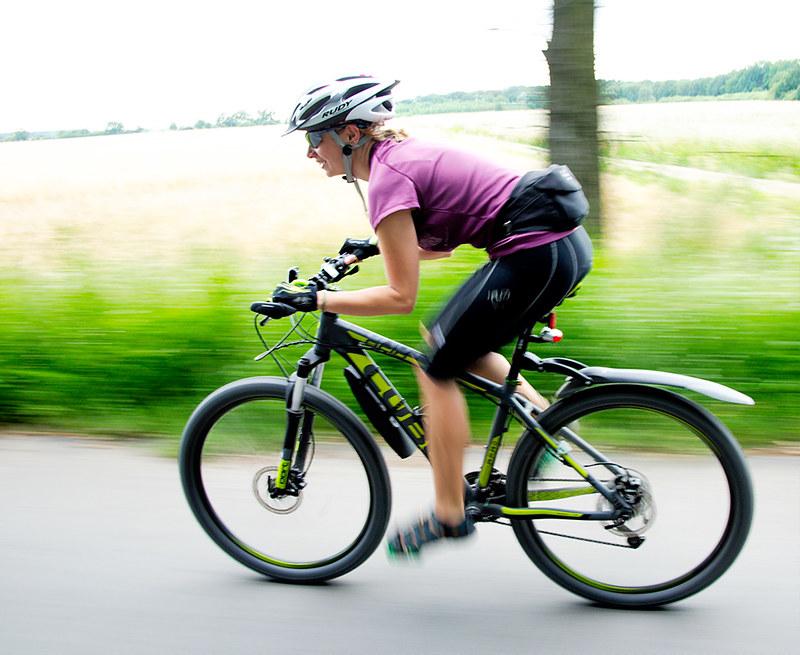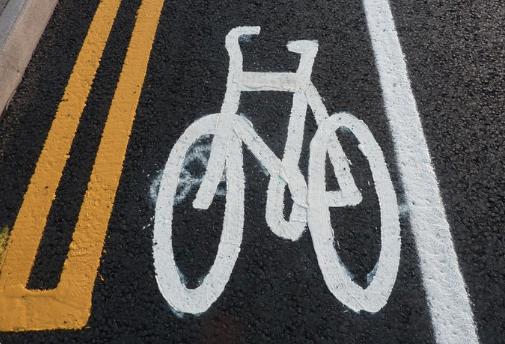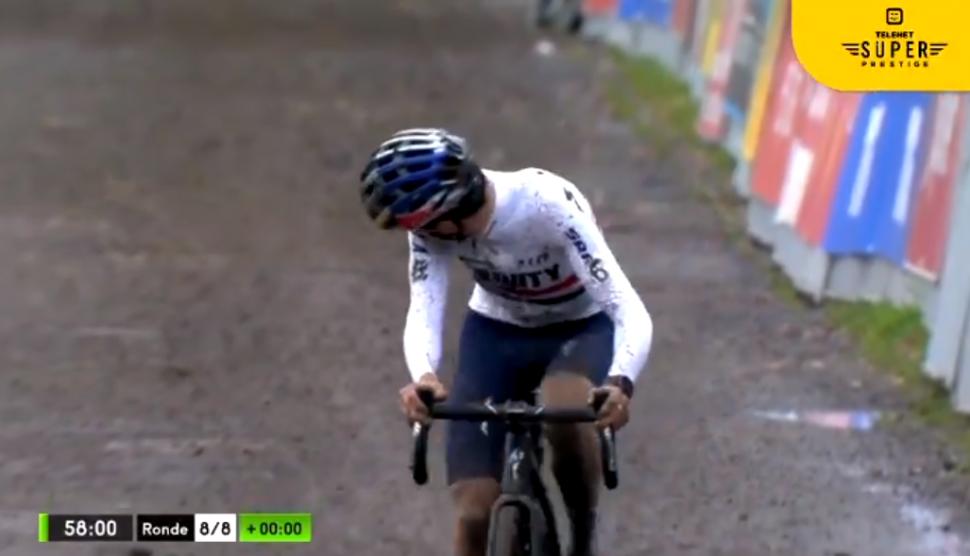- News
- Reviews
- Bikes
- Accessories
- Accessories - misc
- Computer mounts
- Bags
- Bar ends
- Bike bags & cases
- Bottle cages
- Bottles
- Cameras
- Car racks
- Child seats
- Computers
- Glasses
- GPS units
- Helmets
- Lights - front
- Lights - rear
- Lights - sets
- Locks
- Mirrors
- Mudguards
- Racks
- Pumps & CO2 inflators
- Puncture kits
- Reflectives
- Smart watches
- Stands and racks
- Trailers
- Clothing
- Components
- Bar tape & grips
- Bottom brackets
- Brake & gear cables
- Brake & STI levers
- Brake pads & spares
- Brakes
- Cassettes & freewheels
- Chains
- Chainsets & chainrings
- Derailleurs - front
- Derailleurs - rear
- Forks
- Gear levers & shifters
- Groupsets
- Handlebars & extensions
- Headsets
- Hubs
- Inner tubes
- Pedals
- Quick releases & skewers
- Saddles
- Seatposts
- Stems
- Wheels
- Tyres
- Health, fitness and nutrition
- Tools and workshop
- Miscellaneous
- Buyers Guides
- Features
- Forum
- Recommends
- Podcast
news
Cabbie asks Jeremy Vine to condemn 'speeding cyclists'... doesn't get the response he wanted; Daftest idea of the year awards, featuring proposed Cambridge 'Tesla Lanes'; Cycle lane with built-in kitchen; National Pothole Day + more on the live blog
SUMMARY
No Live Blog item found.
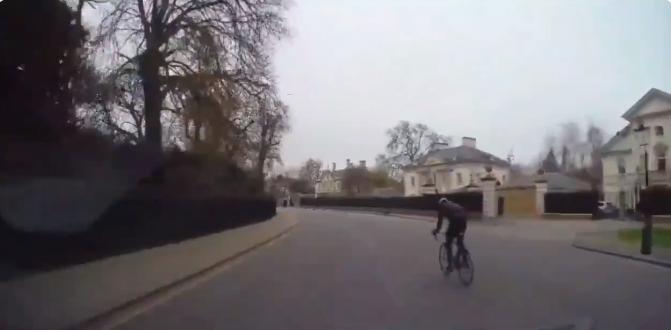 Tom the cabbie Twitter video
Tom the cabbie Twitter video15 January 2021, 16:54
A day in the life in Gran Canaria with Tao Geoghegan Hart and Ineos Grenadiers
📍 Gran Canaria
🎥 @TaoGeoghegan takes control of Grenadier cam for the day pic.twitter.com/1vk9Neeklc— INEOS Grenadiers (@INEOSGrenadiers) January 15, 2021
15 January 2021, 16:10
Velo Wales' new film: Bikepacking 450 miles around Wales
15 January 2021, 13:51
Cabbie tweets Jeremy Vine...doesn't get the response he wanted
Your priorities are utterly bizarre. Get campaigning on this ⏬ and then come back to me. People on bicycles kill roughly two people per year. pic.twitter.com/wcPiMyMlAC
— Jeremy Vine (@theJeremyVine) January 15, 2021
Tom the cabbie pops up on Twitter quite often, usually with a video of an empty cycle lane...Tweeting Jeremy Vine one of his videos probably didn't go the way he was expecting... The broadcaster and cycling advocate threw the question right back at him saying: "Your priorities are utterly bizarre. Get campaigning on this
and then come back to me. People on bicycles kill roughly two people per year."
Vine knows more than most about the Royal Parks' speed limits. In 2014, he was stopped by police for riding at 16mph in Hyde Park where the speed limit was 5mph. However, Royal Parks said that he didn't break the speed limit as they do not legally apply to cyclists, although they did ask that bike riders comply.
15 January 2021, 16:01
Motorists to be charged to enter Bristol clean air zone
Bristol's mayor Marvin Rees has announced a new charging scheme that will affect drivers entering a clean air zone (CAZ) in the centre of the city. The move comes after the government told Bristol City Council it needed to reduce air pollution levels to within legal limits. It has not yet been decided how much drivers will have to pay but the hope is that the scheme will encourage active travel and bring pollution levels within the limits in the quickest possible time.
15 January 2021, 15:06
Egan Bernal says Giro d'Italia is 'number one goal' in 2021
Ineos Grenadiers' first non-British rider to win the Tour de France, Egan Bernal, wants to race the Giro d'Italia in 2021 as he recovers from the back pain that scuppered his 2020 defence of the Yellow Jersey. In an interview with Gazzetta Dello Sport, Bernal said the Italian Grand Tour would be his number one goal for the upcoming season.
"I would like to compete in the Giro in 2021," he said. "That would be the number one goal for me, even if I had said before that I would prepare for the Tour. However, we still have to get together with the team, I don’t know if I could go there as a leader, it will depend on my recovery.
"I feel good and I am very motivated. I have not raced for four months, so I will be at my peak when I restart in February. I had all kinds of exams, with different results. It was difficult, but the problem was solved, I feel like a new cyclist."
15 January 2021, 14:38
UK's second CYCLOPS junction opens in Bolton
How to make a left turn on a CYCLOPS junction when the light for cars is on red.
Simple as that. pic.twitter.com/rmxm2aheS7
— Sam 🚴🌱🍻Ⓥ (@MCRCycleSam) January 15, 2021
The UK's second CYCLOPS (Cycle Optimised Protected Signals) has opened following the successful launch of the first one in Manchetser in July. The junctions seperate people on foot or bike from traffic, giving them priority. Four more junctions of this type are to be built in the UK in 2021 with three more in Manchetser and one in Cambridge.
Greater Manchester’s Walking and Cycling Commissioner, Chris Boardman, said: "The CYCLOPS design is going to fundamentally change the way we do junctions. The experience for people travelling on foot and by bike is so vastly improved. Junctions are traditionally the most intimidating place for people not travelling in a car but this design turns that on its head, making once-scary local trips now an absolute joy."
15 January 2021, 17:09
15 January 2021, 12:25
15 January 2021, 12:24
National Pothole Day
On @NPDay2021 survey results show just had dangerous our roads are for road users. 88% of Cyclists have had to preform a dangerous manoeuvre due to Potholes! 72% of Motorists having to do the same! #NoMorePotholesUK #NationalPotholeDay#UnitedAgainstPotholes pic.twitter.com/5mItlt5gt5
— Mr Pothole (@mrpotholeuk) January 15, 2021
15 January 2021, 11:54
Santander Cycles hire prices frozen
Revealed: full details of fare hikes from March 1.
🚍bus fares up 5p to £1.55
🚲Boris bike hire frozen at £2
🚠cable car up 11% to £5 pic.twitter.com/4qXmvvDhnO— Ross Lydall (@RossLydall) January 15, 2021
The Evening Standard reports that Transport for London (TfL) is drawing up radical plans to restore its finances, with Santander Cycles one of the few transport options that will not currently see price rises. The £2 daily access charge for a Santander bike is to be frozen as other modes of transport's fares increase today in line with national rail's 2.6% rise. Bus fares will go up by 5p to £1.55 and a trip on the cable car is up 50p to £5. Some Tube fares are also increasing.
It comes as the Standard reports a 112-page document submitted to ministers earlier in the week shows that drivers could be charged £5.50 a day to enter Greater London and Canary Wharf could be moved into zone one of the Tube map. TfL commissioner Andy Byford said that they would need a further £3bn bailout before savings and new income could make the body responsible for the capital's public transport self-sufficient by 2023.
15 January 2021, 11:31
Why don't you use the cycle path, is it because it's dark and a bit slushy? No mate someone left a kitchen on it...
Why don't you use the cycle path, is it because its dark and a bit slushy? No mate someone left a kitchen on it. pic.twitter.com/KruSWSACrJ
— Christopher Lang (@langoo) January 14, 2021
15 January 2021, 11:28
15 January 2021, 10:39
Cycling UK calls for clarity on exercise rules
Cycling UK has called for greater clarity on English exercise rules in a joint letter with British Cycling and British Triathlon to Digital, Culture, Media and Sport Secretary Oliver Dowden. The letter says: "Our strong belief, which is backed up by evidence from the scientific community, is that exercise which begins and ends at an individual’s front door, and where appropriate social distancing protocols are observed throughout, presents an incredibly small risk of transmission, and the government should consider making this the basis of its guidance for outdoor exercise.
"There will of course be a need to allow people to travel short distances to access safe places such as parks and green spaces to exercise – such as families and those living around busy and fast-moving roads – and additional clarity on this would be welcomed also."
On Wednesday, former Home Secretary Lord Blunkett dismissed a Sky News question asking whether police should be stopping cyclists.
15 January 2021, 10:19
Consultation to improve cycling and walking routes in Windsor, Maidenhead and Ascot
A four week consultation is being conducted to decide which of the five schemes drawn up by the council to improve active travel routes should be implemented. The scheme will be paid for by a grant of £335,000 from the government's active travel fund and the Windsor Observer reports the council is particularly keen for responses to plans for a segregated cycle route linking north-east and south Maidenhead.
LTNs and school streets are also being considered in parts of the three towns. Councillor Gerry Clark said: "This new funding from central Government is very welcome, and we’re keen to give residents a voice on how it’s spent through the consultation.The funding isn’t enough to deliver all five of the originally proposed schemes, so feedback from residents is particularly important.”
15 January 2021, 09:42
Tom Pidcock to ride Vuelta a España in debut WorldTour season
Tom Pidcock's debut season with Ineos Grenadiers in the WorldTour is starting to take shape. The 21-year-old is currently training with the team out in Gran Canaria and has posted some impressive rides on Strava in the past week. Speaking on the Lanterne Rouge Cycling Podcast, Pidcock explained that once he finishes his cyclo-cross season at the end of January he will be fully focused on the road calendar.
Strade Bianche, the UCI Road World Championships in Belgium and a first Grand Tour at the Vuelta a España are the main goals for 2021. Pidcock also plans to spend June competing in mountain bike races before the Olympics in August.
15 January 2021, 08:53
'Just two weeks into 2021 and the award for the daftest idea of the year has already been decided': Your thoughts on 'Tesla lanes' trial
This is an utter disaster in the making. You can now buy your way out of queueing while degrading public transport. https://t.co/ObG9mfh0bo
— Adam Reynolds (@awjre) January 15, 2021
Cambridgeshire County Council may be getting a lot of feedback on their 'Tesla lanes' trial based off the response to our story yesterday... Many of you pointed out the dangers of allowing cars into bus lanes and argued that electric cars still have the same ability to harm vulnerable road users as non-electric vehicles. Other concerns included that electric vehicles are quieter than normal cars, which makes it harder for cyclists to hear them, and that allowing vehicles into bus lanes sets a dangerous precedent for future policy...
Just 2 weeks into 2021 and the Award for the daftest idea of the year has already been decided.
— David Barker (@cocobarker1) January 14, 2021
This is a great answer to the question 'how do you make a bus lane less efficient, more dangerous and disproportionately benefit rich people?'
— Jordan (@jordanbhx) January 14, 2021
Dan is the road.cc news editor and has spent the past four years writing stories and features, as well as (hopefully) keeping you entertained on the live blog. Having previously written about nearly every other sport under the sun for the Express, and the weird and wonderful world of non-league football for the Non-League Paper, Dan joined road.cc in 2020. Come the weekend you'll find him labouring up a hill, probably with a mouth full of jelly babies, or making a bonk-induced trip to a south of England petrol station... in search of more jelly babies.
Add new comment
99 comments

Well you've got there the figures up to 2010 (125 pedestrian deaths), the government's own publications contradict this (see top of page 3, 2010 405 pedestrian deaths): https://assets.publishing.service.gov.uk/government/uploads/system/uploa...

Well you've got there the figures up to 2010 (125 pedestrian deaths), the government's own publications contradict this (see top of page 3, 2010 405 pedestrian deaths): https://assets.publishing.service.gov.uk/government/uploads/system/uploa...
Well If we are only debating the data sources, I'm happy to rest with the ONS. The substantive point remains that rates, not absolute numbers, are what matter, and they paint a very different picture to that suggested by Vine (for whom I have a lot of respect - I just don't think he helped himself here).
This appears to be the Regents Park circuit, on of the few places in central London it is possible to go remotely fast on a bike, yet the cabbie complains about being overtaken by a cyclist speeding at a whopping 5mph faster. Somehow I think might be you who is being disingenous [purple cars are you effing kidding, strawman what a prick.] ahum.


It isn't disingenuous, it is simply making the point that there are far more important issues in road safety than slowing down "speeding" bicycles, and perhaps we should attempt to address the more important issues as a higher priority.
And that is without getting into the debate about how you enforce anything against a "speeding" cyclist since there is no legal obligation for a bicycle to have a speedometer of any description, and speed given through a GPS device is not as reliable as that given through a properly calibrated speedometer, such as you find on a motor vehicle.
Riding at a speed appropriate to the conditions is always the watchword ... especially where the video used as an appeal against said "speeding" cyclists shows them riding perfectly safely and threatening/inconveincing no one.


Judging by the replies you're recieving it appears the hard of thinking are out in force today.
As you've said the rate of injury is crucial when comparing risk.
IF the rate of pedestrian injury were the same for bicycles and cars then there would be no reduction in pedestrian injuries if all car drivers switched to cycling.
There would also be no validity in criticising car drivers for the number of pedestrian injuries as that would simply be a product of the number of cars rather than their inherent dangerousness.
When comparing the two though it is important to exclude motorway miles as there is almost no mixing with vulnerable road users on the motorway so motorway miles will skew the results and make cars seem less dangerous to pedestrians than they really are.

Well it was Vine who introduced the pedestrian death figures as the defence. Supposing it was shown that proportionately more pedestrians were killed by cyclists than by cars. Do you think that would be relevant?
Well it would be, wouldn't it? But that is clearly not the case. In any case, one does have to look at absolute numbers as well as proportionate ones.Pedestrian deaths as a result of cycle involvement (not necessarily cyclist at fault) are almost exactly equivalent to deaths by lightning strike per annum (58 in last thirty years UK) so it's a vanishingly small number, whereas yearly pedestrian deaths from motor vehicle involvement (again, admittedly, not always motor driver at fault) are approaching 500, overall deaths from motor vehicles are 1700+, and premature deaths from air pollution are 40,000+, equivalent to a pandemic every two years. That's before we even begin to think about the deaths related to obesity and other diseases caused by our car-dependent culture. So someone asking Vine to turn his attention away from car damage towards the supposed terrible danger to children playing of cyclists riding at 22 mph on the road that runs around the perimeter of a park is about the biggest pile of steaming red herrings imaginable.
If 40,000+ people a year died directly or indirectly as a result of people playing soccer, and two as a result of people playing lacrosse, would we spend all our time trying to figure out the relative numbers of lacrosse players comparative to soccer players to try to establish some form of equivalence, or would we say 40,000 against 2, we'd better try and do something about the soccer deaths? It wouldn't matter if, proportionately, lacrosse caused more deaths than soccer, it would still be the soccer figures that would require attention.

I like your soccer/lacrosse analogy. Let's run with that - obviously the numbers here are made up, but it's the logic that matters.
So consider deaths amongst the spectators (spectators are analogous to the pedestrians, with me so far?) at these sporting events.
Precious few lacrosse spectator deaths, but then next to no lacrosse matches either (lacrosse is cycling, do keep up) compared to soccer. Rather more deaths amongst soccer spectators, but not pro rata the overwhelmingly greater number of soccer matches (you guessed it, soccer is motoring). Perhaps you can see where this is going now, no?
The regulators need to maintain the total number of sports matches played (that's analogous to passenger journeys, stay with me). So how do they bear down on deaths among spectators? Encourage more lacrosse matches, reasoning there have been fewer spectator deaths amongst them?

But why are you focussing only on moving people from one sport/mode of transport to the other?
The original tweet was about addressing the supposed danger from 'speeding cyclists'. So for the analogy to work you would have to look at the relative merits of regulating lacrosse players' vs soccer players' dangerous behaviour, to stop them hitting the ball into the crowd or whatever it is they're doing that's killing spectators.
In that case, whatever the relative rates, any reduction you make in the rate at soccer matches, even if it's a smaller reduction than you might make in the rate at lacrosse matches, is almost certainly going to have a greater gross benefit.

The point of the analogy is that you can't use an absolute number of harmful events in isolation to establish whether any activity is safe.
You also need to know how frequently an activity occurs.
If activity A occurs twice a year and kills one person a year it is clearly dangerous despite the low absolute number of fatalities.
If activity B occurs a million times per year and kills 2 people it's obviously far safer than activity A in relative terms (deaths per activity) but twice as dangerous in absolute terms (actual number of deaths).
Would it be a sensible policy to encourage people to abandon activity B and take up activity A based solely on the absolute number of deaths?
For that reason comparing the absolute number of deaths from cars and bicycles is disingenuous because it isn't an accurate comparison.
If all car journeys under 3km were replaced with cycling the number of deaths caused by cyclists would increase massively whilst the number of deaths caused by cars would fall.
This wouldn't change the relative safety of either form of transport.

The point of the analogy is that you can't use an absolute number of harmful events in isolation to establish whether any activity is safe.
[...]
Would it be a sensible policy to encourage people to abandon activity B and take up activity A based solely on the absolute number of deaths?
But that's the flaw. We're not talking about whether an activity is safe per se, or whether people should switch from one activity to another. We're talking about whether it's worth putting effort into tackling those people who are performing each activity dangerously.

The point of the analogy is that you can't use an absolute number of harmful events in isolation to establish whether any activity is safe.
[...]
Would it be a sensible policy to encourage people to abandon activity B and take up activity A based solely on the absolute number of deaths?
But that's the flaw. We're not talking about whether an activity is safe per se, or whether people should switch from one activity to another. We're talking about whether it's worth putting effort into tackling those people who are performing each activity dangerously.
It goes to the heart of the argument that the government should discourage car use whilst encouraging cycle use in its place, for example by transferring road space from one to the other. It also challenges the cyclists' favourite argument - 'start with the most dangerous vehicle' - if figures show that for every car that is replaced by a bicycle the pedestrian death rate remains comparable. So I think it's important to be aware of the numbers, and their proportion.
If cyclists continue to take refuge in arguments whose validity rests on there be so few bicycles relative to cars, don't be surprised when others say, "then let's keep it that way".

It goes to the heart of the argument that the government should discourage car use whilst encouraging cycle use in its place, for example by transferring road space from one to the other.
Maybe so, but that's besides the point of the current discussion. That started with an assertion that we needed to raise awareness of the dangers posed by speeding cyclists and a response that we should first tackle those posed by dangerous drivers. Modal shift was never mentioned.
FWIW, more generally, I'm with SimonE. I think both you/rich_cb and Vine/his defenders here are right and wrong and the same time - relative rates do matter, but absolute rates matter as well. If you only look at one or the other you're missing half the story. Which matters more all depends what question you're trying to ask, or what response you're considering.

The rate of harm is absolutely fundamental to the decision about tackling the people performing the activity.
IF cycling were as dangerous to pedestrians per urban mile travelled as driving a car then dangerous urban cyclists should be pursued with equal vigour to dangerous urban drivers.
IF unicyclists killed pedestrians at 10 times the rate of any other vehicle would it not be worth tackling the danger even if the absolute numbers of unicyclists was low?
Within the cycling/driving debate the idea of modal shift is central to many policies, the rate of harm caused by each modality is therefore crucial to an informed debate.
For clarity: a capitalised IF indicates that this is a hypothetical proposition.

IF unicyclists killed pedestrians at 10 times the rate of any other vehicle would it not be worth tackling the danger even if the absolute numbers of unicyclists was low?
Maybe. It depends.
If your method of tackling them is a public awareness campaign, the return of impact to effort is likely to be so low as to make it pointless.
Let's say you run a campaign that influences 1% of dangerous drivers to modify their behaviour to drive more appropriately. Then you run a campaign targeting cyclists that is much more successful - if influences 10% of dangerous cyclists to modify their behaviour. Even though the first campaign was prima facie much less effective, it would probably have a lower impact in terms of reducing deaths and injuries, simply because there's a bigger target population.

Public information campaigns will obviously be more effective with a larger target population (although targeted advertising may change that) but they are by no means the only form of intervention.
I think the crux of the matter is that when selecting evidence to use in promoting cycling we should do so carefully.
Choose evidence that is easily dismissed, as Vine has done, and your promotion is far less likely to be effective.
Far more effective to say that if car drivers switched to bicycles for X percentage of their journeys we would save Y children's lives per year.
That is the sort of argument that resonates as we saw in the 'Kindermoord' campaign.

Public information campaigns will obviously be more effective with a larger target population (although targeted advertising may change that) but they are by no means the only form of intervention.
Agreed. But they are the form of intervention that was in debate here.

I like your soccer/lacrosse analogy. Let's run with that - obviously the numbers here are made up, but it's the logic that matters. So consider deaths amongst the spectators (spectators are analogous to the pedestrians, with me so far?) at these sporting events. Precious few lacrosse spectator deaths, but then next to no lacrosse matches either (lacrosse is cycling, do keep up) compared to soccer. Rather more deaths amongst soccer spectators, but not pro rata the overwhelmingly greater number of soccer matches (you guessed it, soccer is motoring). Perhaps you can see where this is going now, no? The regulators need to maintain the total number of sports matches played (that's analogous to passenger journeys, stay with me). So how do they bear down on deaths among spectators? Encourage more lacrosse matches, reasoning there have been fewer spectator deaths amongst them?
But again, old chap (or madam), you're ignoring the point that motor vehicles drive 99 times the miles (even if we include motorway miles, which as you yourself have sensibly said skew the figure in favour of the motorist) but kill 200 times the pedestrians, or 800+ times the total deaths. If you simply scaled up so nobody drove and everyone cycled, cycling would kill 200 people a year compared to 1700 and that's before we even begin to think about deaths from pollution, obesity etc. However we're clearly not going to agree on this and you have thought reasonably about your arguments (that's not meant to be patronising, just saying you're not a Socrati hates cyclist merchant), I just don't agree with them, so all the best and have a good safe weekend.
we're clearly not going to agree on this and you have thought reasonably about your arguments (that's not meant to be patronising, just saying your not a Socrati hates cyclist merchant), I just don't agree with them, so all the best and have a good safe weekend.
This is a worthwhile discussion. Both Rendel and Sriracha have important perspectives on interpreting the statistics. It is still important to have open discussion but knee-jerk reactions and accusations of trolling are not helpful.
For me one of the issues is the obvious discrepancy in lethality of the vehicle, a combination of velocity and mass. If I'm crossing a road I would be far more concerned with the cars, vans and lorries than cyclists, even if their numbers were equal.
And all the motorised vehicles will be travelling faster than the vast majority of cyclists. We also know that speed limit compliance among drivers is terrible so some will be travelling a good deal faster. Let's be honest, we cyclists only go faster than cars when the latter are physically forced to slow down e.g. traffic lights, junctions, queues. I've ridden in traffic since I was 12 and despite trying hard enough on occasions I cannot keep up with a car unless they've been obliged to slow or stop by something in their path.

Well thank you for your kind words - I don't see myself as a socrati replacement either! And I agree with what you say, except one number. You wrote:
but [cars/vans/pickups, compared to bicycles] kill 200 times the pedestrians
The actual figure I took, from the ONS data, was 72 times. That's the problem! That turns it on its head.
Anyway I did find another discussion, which seems to be connected to Vine's comment:
https://fullfact.org/health/cyclist-deaths/
In particular they say:
From 2012 to 2016, 2,120 pedestrians were killed by a vehicle in Britain—0.8% of these involved a bicycle, and 66% involved a car.
So again they are comparing pedestrian deaths involving bicycles as against cars. This gives a factor of 83 (66/0.8). Similar to the factor of 72 I found previously.
I can think of a valid argument against this number, but so far no one has raised it. Why not include cyclist (and even motorcyclist) fatalities involving a car, together with the pedestrian fatalities? In other words, compare fatalities of all vulnerable road users (not just pedestrians) by car and by bicycle. Within the sort of journeys that can be substituted by bicycles that would make sense. I'll leave that to others.
Another factor that seems to have been missed is the "blame" factor. I recall from somewhere that the pedestrian/cyclist fatalities were approximately 60% blamed on the pedestrian (e.g. pedestrian suddenly steps in front of a cyclist). I don't know how the blame sits with pedestrian/driver fatalities but I suspect that the figures will be far more towards the driver being at fault.

Vine's defence of cyclists (only causing 2 deaths per year) is disingenuous. I don't suppose purple cars are very high on the numbers either - should we give them a pass? https://www.whatdotheyknow.com/request/uk_accident_statistics_for_pedes Looking at Table 1: Number of deaths where a pedestrian was injured in collision with (a) a pedal cycle, or (b) a car, pick-up truck or van, England and Wales, 2006-2010 it shows that over those years 14 pedestrians were killed in collision with a bicycle, compared to 1011 with a car etc. So a factor of 72. Pick your reference base; number of vehicles, miles travelled, urban trips, whatever, I'm not sure the factor of 72 shows cyclists in a very good light.
I'm sure those 997 pedestrians were glad they were killed by a driver not a cyclist. Is that a forest I see in your eye, while you complain about the speck in mine?

On the 'rate' point - the victim does not care one jot how far someone has travelled to hit them or whether it's their third journey of the day.
Travelling by rail or air is much safer than travelling by motor vehicle - but, unsurprisingly, few travel by air to the supermarket, similarly, there's no point in using a bicycle to transport cars. The point I'm trying to make is that some divisors (like distance travelled) are spurious - most sensible people don't think all motor vehicle miles can be replaced by bicycle miles so the divisior is meaningless, in effect what the calculation suggests is that "If bicycles travelled as many miles as motor traffic then...." but that isn't going to happen if, for no other reason than if there were no motor vehicles our lives would be organised very differently.
If you seek to reduce the total number of pedestrians killed by vehicles per annum by 10%, you cannot achieve that by concentrating on cyclists - the "rate per" really is irrelevant.
There is plenty of research that shows darker coloured cars have more accidents - yellow or white cars have the least accidents. It's a petty point I raise whenever car drivers complain of cyclists not wearing lurid yellow - I suggest it would be great if the concerned motorist would first set a safety example and have their car painted dayglo pink. Gets me nowehere.

There is plenty of research that shows darker coloured cars have more accidents - yellow or white cars have the least accidents. It's a petty point I raise whenever car drivers complain of cyclists not wearing lurid yellow - I suggest it would be great if the concerned motorist would first set a safety example and have their car painted dayglo pink. Gets me nowehere.
All good points, but sense and logic rarely get you anywhere when people have fixed views; but keep trying.
I do somewhat enjoy replying to the patronising "at least we can see you", by pointing out that they as sometimes pedestrians have as much responsibility as cyclists to be visable and that the Highway Code has very similar wording reguarding to cyclist and pedestrain advice to wear bright and visable clothing. Between front door and car or car and place of work and "essential" shopping.
I have noticed that when riding off road at night, most of my commute is on the rough stuff, that my relatively powerful lights pick out the reflective patches on the back of their dogs eyes long before the walkers are visable in their dark walking clothing. Not that they are in any way required to be very noticable in the woods and on the heath, but they might be walking near and across roads at some point...

alansmurphy
|
3 years ago
1 like
My chauffeur (the good lady as I don't drive) is looking at a new car; we need an estate so the Volvo V60 or XC variant were considered. Looked at the Electric version at around £10k more and doing the calculations on mileage how long it would take to get this back - well it's a good job there's room for my coffin in the back!
Pages
Latest Comments
- wtjs 1 sec ago
Whenever I see one of those with its jaunty spare wheel I think, "there goes a 'fun' person...
- chrisonabike 15 min 47 sec ago
Why would you let a system which is constantly responsible for injuries to continue to operate?...
- brooksby 34 min 46 sec ago
Depends on the crime and depends on the skin colour and wealth of the perpetrator , I'd wager.
- john_smith 44 min 41 sec ago
Maybe BBC tv news has changed recently, but when I last watched it, I thought it was quite poor compared with the news programmes on Dutch tv (at...
- Hirsute 1 hour 33 min ago
This is no any old bike stand, this is a M&S bike stand
- Hirsute 1 hour 49 min ago
Because of the floating taxi rank....
- jaymack 2 hours 21 min ago
A million years of evolutionary development is a better indicater of what you need to hydrate during/following exercise; water. If you turn the...
- Tony W. 2 hours 35 min ago
I think these are the best feeling tyres, best grip and excellent puncture resistance, and even when you get one they don't go flat, if you ride...
- Jazz 4 hours 56 min ago
Hi I can't access either. Need to be able to play from Stage 1 or what is the point.
- trenzalorian 9 hours 56 min ago
try deleting cookies and re-logging in. That worked for me (I also changed passwords so both site and fantasy passwords were still identical....
